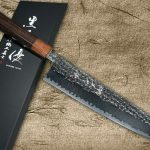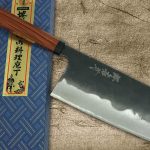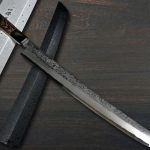Japanese food is renowned for the top-tier, premium-quality ingredients that are delicately handled through intricate food preparation processes. The mastery of knife utilization skills, the professionalism in food placement, and the originality in the selection of varying ingredients have all contributed to the tremendous success of Japanese dishes, while the immense attention is all on the vivid-colored Salmon slices and pieces of mouth-watering Japanese Mackerel laid on elegant, traditional Japanese plates.
While the beautiful aesthetics of Japanese dishes top the charts for being social media-friendly and extremely attractive for bloggers, the satisfying flavors of ingredient combinations and the blends of detailed recipe seasonings put together an extremely unique image for Japanese dishes in general. The delicate preparations and premium-quality ingredient selections are what truly reels in diners and gourmets from all parts of the world, as the intricacy adds up to the mystery it holds.
Behind all the complicated food preps and delicate, yet pre-thought ingredient selection, Japanese food has its allies that would always backup the entire cooking process filled with dedication and passion. Among the best pals, a Japanese knife is definitely one that plays the biggest part in Japanese food cooking. All the difficult, yet accurately perfect slices and cuts of raw meat, poultry, and seafood are all done with a Japanese knife or sometimes, a set of various Japanese knives. As a Japanese knife not only enables users to professionally slice through, fillet, and bone different kinds of meat and veggies, Japanese food chefs and culinary experts are also relying on the capabilities of these knives to work on the beautiful and meticulous aesthetics of ingredient placement and shaping.
Japanese knives are available in various shapes, forms, and sizes. Some Japanese knives are narrow and long in shape, yet forged out of extremely hard steel types to allow perfect cuts and professional slices through supreme selections of fresh, caught-from-sea ingredients like Yellowtail, Seabass, Halibut, Ahi Tuna, and Japanese Mackerel. But how are Japanese knives different from the typical kitchen knives we own in our home kitchens?
Japanese Knife Vs Kitchen Knife
Normal kitchen knives used in our homes are so much cheaper and lower in price when compared to what Japanese knives in the market are offered at. With this, there are actually some diners and home cooks who would simply use general kitchen knives to make dream sushi and sashimi dishes at home. However, what they don’t realize is the fact that a Japanese knife can do so much better than just mere cutting. Normal kitchen knives differ from Japanese knives boldly in steel quality – this, when it comes to slicing through a vast variety of ingredients, will greatly show significant differences. Supreme-quality hard steels like Damascus steel or High-prime Carbon steels are specifically used in the forging of professional Japanese knives that can perform varying techniques and master the traditional skills in sushi and sashimi-crafting.
Apart from the hard steels that are selected to forge fine-quality, extraordinary Japanese knives, what offers Japanese blades the upper hand is the blade features. Each Japanese knife holds different capabilities and are forged for varying purposes. For instance, a Gyuto knife serves as a chef’s main knife which performs a wide variety of tasks (is also a multi-tasking knife), while a Yanagiba knife or also known as a sashimi knife, is forged especially for the crafting of sushi and sashimi dishes requiring careful selections of ingredients and the handling methods that include filleting, boning, cutting, slicing, and professional chopping.
The beautiful, unique, and authentic blade designs are also what backups the fame and tremendous success Japanese knives have up until today. Hammered textures on blade surfaces that depict nature and Japanese culture are very much loved by blade collectors and Japanese knife lovers.



